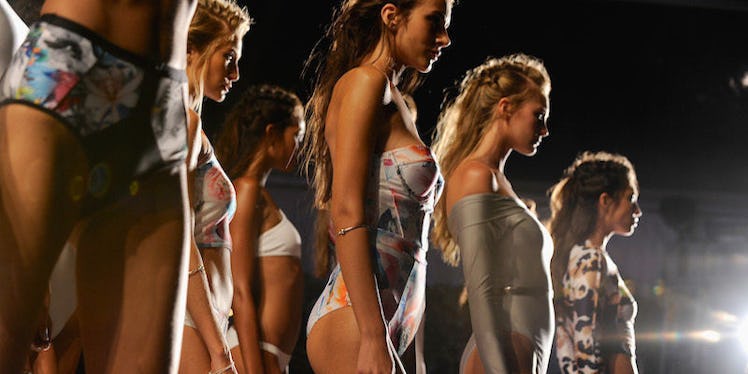
F*ck Thinspiration: Why Fashion's 'Ideal' Body Type Needs To Change
Some women are born naturally thin, with rocket-fueled metabolisms and hardly an ounce of fat on their 110-pound frames.
For women whose genetic disposition means they can remain at a low body weight through sustainable methods (not out of starvation), there is absolutely nothing wrong.
Healthy looks different on everyone. It can be quite callous and insensitive to call a woman out for being thinner than what you believe is ideal.
Recently, Victoria Beckham spoke to The Telegraph to defend the use of thin models in her latest show.
She explains her choice by saying:
Our casting director spoke to the (modeling) agencies, and we know that all our girls are healthy. They're young, they're thin, but that doesn't mean they're ill.
The singer-turned-designer insisted she only worked with "healthy" girls for her New York Fashion Week show.
The star decided to speak out after Piers Morgan wrote a lengthy article for the Daily Mail where he described her models as both "painfully thin" and "painfully miserable."
Beckham is right in one regard.
As she said herself, just because these girls appear to be thin, that doesn’t necessarily mean they are resorting to self-deprivation to attain their svelte frames.
But what the fashion designer has sadly failed to understand is the issue isn't simply about putting these girls onto the catwalk. The issue is she insists on only using one body type for her runway shows.
Through this, she's inherently promoting the idea that a low dress size and beauty are inextricably linked. She's purporting one look, one body type and one socially-articulated perception of beauty.
Through no fault of their own, women such as the models used in Beckham’s show represent a mere fragment of the incredible diversity that constitutes as womanhood.
They may, in fact, be perfectly healthy. However, they personify and embody a slim minority of the population.
With the body positivity movement well and in full swing, why is the hyper-influential fashion industry still pushing onto its audience one cookie-cutter mold to identify what is healthy and fashionable?
Why, as consumers, do we still subscribe to these ill-thought out, destructive ways of thinking?
Some of us are born a Kim, some of us a Kendall.
There is always going to be another girl who is skinnier, and yes, perhaps she has a gap between her thighs.
You can waste years pining over bodies that -- due to your unique genetic makeup (predetermined since your birth) -- you are highly unlikely to achieve.
Or, you can embrace the beauty of diversity and realize how incredibly, mind-numbingly boring it would be if we all looked the same.
This is what Beckham has unfortunately neglected to do.
For so many of us, it doesn’t matter how disciplined our diets or exercise regimes are. It is simply unattainable for us to look as rail thin as the models in Beckham’s show.
Because of this, we desperately require a more balanced, considered representation of womanhood and beauty to articulate this diversity within the mass media and fashion industry.
We need to eliminate the still highly-influential and damaging “thin ideal” to communicate a more constructive and helpful dialogue.
By doing this, we can be the healthiest, fittest and happiest versions of ourselves.